More than 15 years ago Montana-based photographer Ami Vitale first photographed a story on the northern white rhinoceros. The animal—a subspecies of the white rhino—was on the verge of being declared functionally extinct. The story was tragic, and it left an impression.
Since then Vitale—who has photographed giraffe relocations and other megafauna—has continued to cover conservation around rhino species, including the recent translocation of 21 eastern black rhinos, which she covered for Nature Conservancy magazine.
The eastern black rhino—a subspecies of the black rhino—was once on the brink of extinction in Kenya. After a number of conservation efforts, the rhino population is back on the rise, so much so that some sanctuaries are running out of room. To help reduce overcrowding and support the growing population, in 2024 the Kenya Wildlife Service relocated 21 rhinos to Loisaba Conservancy, a wildlife conservancy in central Kenya. That landscape—now the 17th rhino sanctuary in the country—has worked with TNC on grazing practices and other conservation efforts.
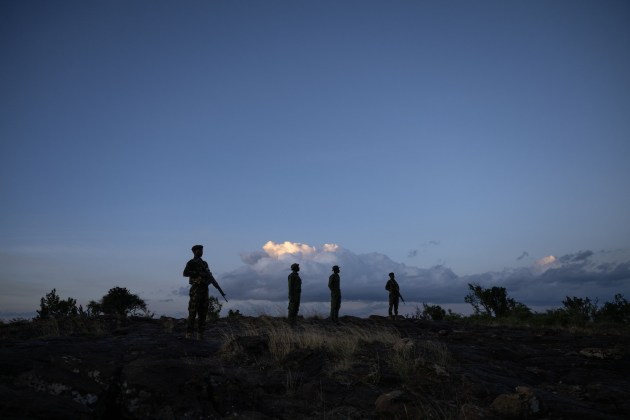
To cover the rhinos’ translocation, Vitale traveled to wildlife sanctuaries in Kenya multiple times over several years. She captured images before, during and after their move, culminating in drone footage of a baby rhino, Valentine, born in its new home. Her work, including a photograph of a resting male rhino, Bruno, under a rainbow won First Place in its category in the Picture of the Year International awards, a prestigious annual photojournalism contest.
The moment under the rainbow, years after covering the loss of the northern white rhino subspecies, felt especially profound to her, she says. That day it was dark and raining, and she had to catch a flight. She saw a rhino shadow on the horizon under the clouds and rain, and she waited.
“Moments before I have to leave, the sky opens up and this rainbow appears,” she says. “I thought, this is the perfect metaphor: There is always hope, and you just have to be committed and persistent and patient.”
Here are some of Vitale’s photos of these ancient animals and the people fighting to save them. You can read more about the work of the Kenya Wildlife Service, Loisaba Conservancy and TNC’s work to help the animals in the latest issue of Nature Conservancy magazine.
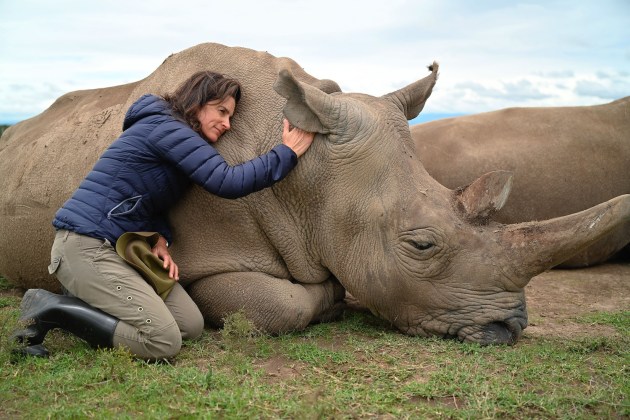
Ami Vitale sits beside one of the last northern white rhinos on Earth. “I felt like I was in the presence of a unicorn,” she says of her first experience meeting the then-critically endangered animal. “You just looked at them and understood right away that they had been roaming the planet for so much longer than humanity has. They look prehistoric, they look like dinosaurs and the thing that surprised me was this profound sense of wonder.”
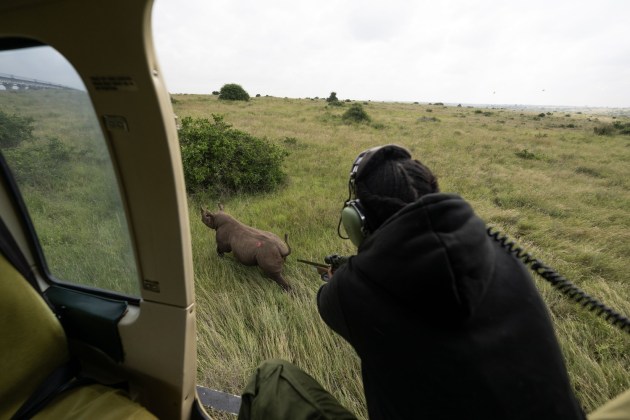
Bringing the rhinos from one conservancy to another was a monumental effort. Vitale documented the work of conservationists and veterinarians, like Kenya Wildlife Service veterinarian Mukami Ruoro-Oundo seen here darting a black rhino in Nairobi National Park before its translocation to Loisaba.
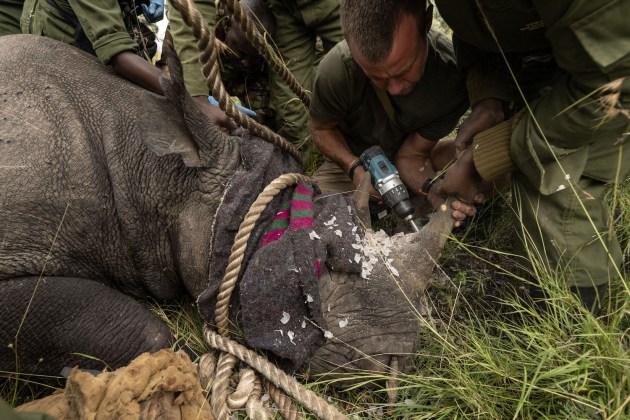
To move such a massive animal safely involved delicate work, and Vitale tried to document that work while staying out of the way. Here a member of the veterinarian team for the Kenya Wildlife Service begins the process of sedating and attaching a transmitter to the horn of an eastern black rhino named Kibou before her translocation to Loisaba Conservancy.
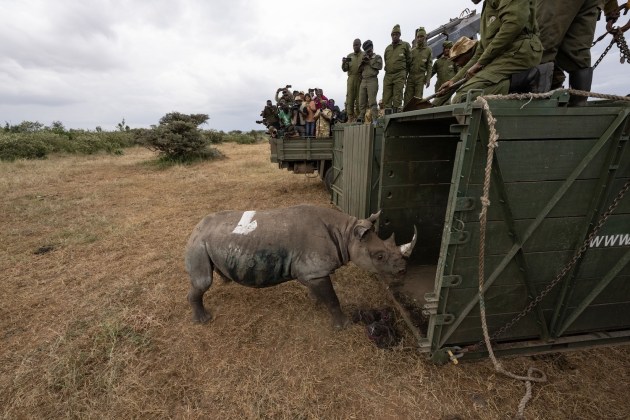
Black rhino Ushindi leaves her crate after being captured and transported from Ol Pejeta Conservancy to Loisaba Conservancy. To capture moments like these, Vitale relied on her years of experience following rhino conservation efforts—and she stayed alert, she says, respecting the veterinarians and wildlife service workers who understand the rhinos best.
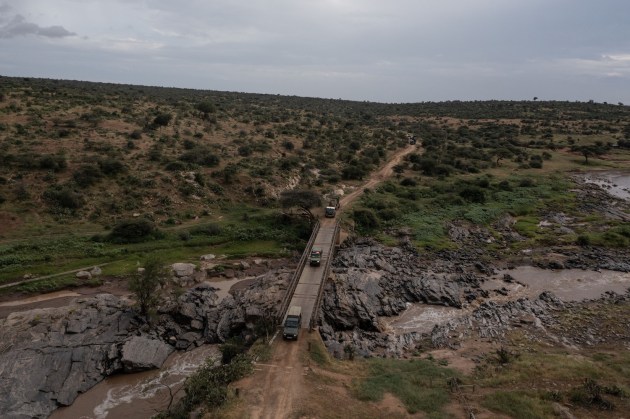
Vitale used drone photography to capture moments from a distance that could convey the vast scale of the area’s potential wildlife corridors. Here the Kenya Wildlife Service carries black rhinos from Ol Pejeta Conservancy to Loisaba.
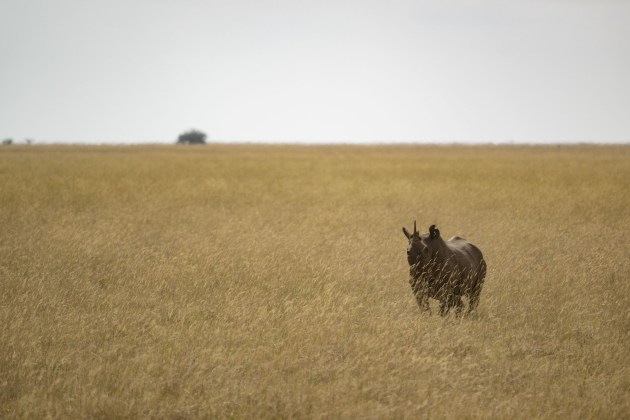
Once at Loisaba Conservancy, Vitale joined rangers as they monitored recently arrived black rhinos like Diamirza here. The rangers track the rhinos to ensure their continued health and safety after they arrive.
Sometimes, Vitale says, the rhinos like to hide in the brush—making them difficult for her camera, or the rangers, to spot.
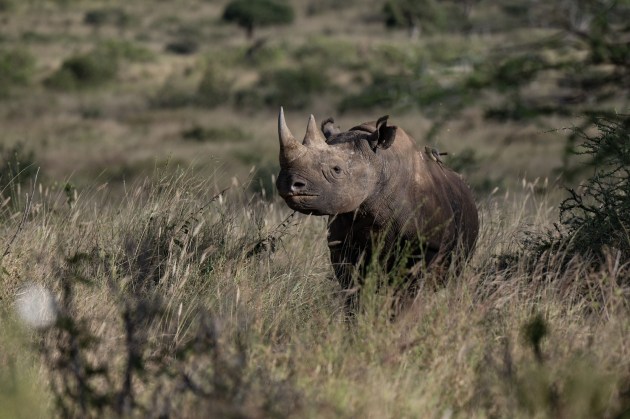
A version of this article ran in the latest issue of Nature Conservancy magazine alongside feature stories on the rhino relocation, community conservation in a Baltimore neighborhood and extensive work to help conserve water in the Colorado River Basin.




Such an inspiring story well told in the video and through Amy’s superb photos. Well done TNC, KWS and other partners for a much-needed conservation success.
Ami Vitale’s photography for this article is beautiful. Thank you. My sister just returned from a trip to southern Africa. Her photos weren’t as good as Vitale’s, but what she saw was fascinating. So many amazing animals.
Great photo of Ami snuggling up to the rhino. I think I’ll stick with leaning into big trees though!